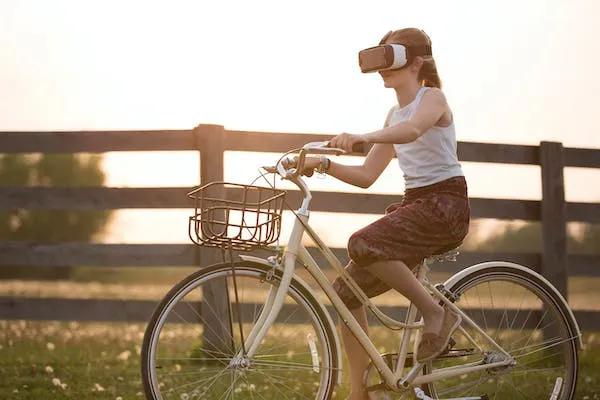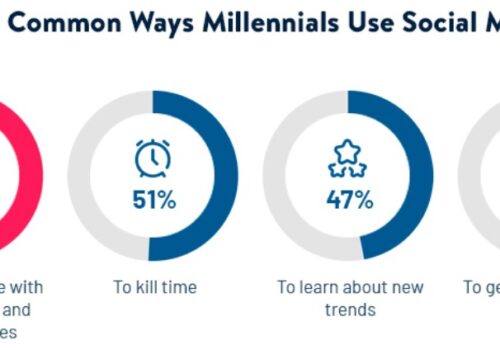Over half a century ago, Ivan Sutherland, an associate professor at Harvard and computer scientist, designed the first head-mounted display and named it the Sword of Damocles.
Since then, Augmented Reality (AR) has come a long way. It has become so prevalent in our daily lives that the line between physical and digital reality may soon be blurred.
AR has significantly impacted a wide range of industries, such as gaming, education, healthcare, and marketing. By exploring AR statistics, we can understand its rapid growth, transformative impact, and immense potential.
If you want to learn more about this immersive technology, check out the numbers and trends that define the exciting realm of Augmented Reality.
| Statistic | Value |
|---|---|
| AR Sector Worth in 2022 | $3.5 billion |
| Expected AR Sector Worth in 2023 | Over $18 billion |
| Estimated Users of Mobile AR by 2024 | 1.73 billion |
| Number of AR Startups on AngelList | Approximately 2,300 |
| Percentage of Americans Unaware of AR | 70% |
| Revenue from Mobile AR Predicted for 2023 | $12.8 billion |
| Usage of AR by Medium-sized Brands | 90% |
| Expected AR Market Value by 2024 | $50 billion |
| Anticipated Global AR User Percentage by 2025 | 75% |
| Focus of AR Development Businesses | 65% on industrial applications |
| Expected Daily Smart Glasses Users by 2025 | 14 million |
| Expected Growth of AR/MR in Troubleshooting & Training | Emerging trend |
| Desire to Integrate AR/VR in Marketing Campaigns | 67% of buyers and media strategists |
| Percentage of Shops Using AR/VR to Enhance Shopping Experience | 1% |
| Shoppers Willing to Shop More with AR | More than 70% |
| Ad Firms Increasing Use of AR | 67% |
| Increase in Conversion Rates with AR Integration | Up to 40% |
| AR Gaming Industry Worth in 2021 | $6.4 billion |
| Forecasted AR Market in Automotive by 2025 | $337 billion |
| Expected AR Market in Healthcare by 2026 | Up to $4 billion |
| Retail Companies Incorporating AR for Sales Improvement | 25% |
| Age Group Most Using AR | 16 to 24 years old |
| Percentage Familiar with AR | 70% |
| Shoppers Preferring Retailers with AR Experiences | 61% |
| Consumers Willing to Pay More for AR Customization | 40% |
| Consumers Using AR While Shopping | Almost one-third |
| Smart Glasses and Wearables CAGR (2021-2026) | 71.3% |
| Percentage of Small & Medium-Sized Firms Using AR | Around 88% |
| Investment in AR/VR Technologies in 2020 | $18 billion |
| Number of AR Startups on AngelList | Around 2,800 |
| Microsoft’s VR/AR Patents Ownership | More than 10,000 |
| Expected AR Gaming Market Worth in 2024 | Almost $285 billion |
| Downloads of ARKit-only Apps in the First Six Months | 13 million |
| Upcoming AR Integration in Audi, Tesla, Volvo, Mercedes, and Toyota Vehicles | Standard equipment |
| Increase in AR-enabled Android Phone Users | From 100 million to 250 million |
| Number of AR Apps Available on iOS vs. Android | More on iOS |
| Augmented Reality Trends: Metaverse, IoT, Industry 4.0 | Driving AR deployment |
| Successful AR Use Cases | Response rates, sales, engagement, app installs |
AR Facts and Figures In General
Image credit: Pexels
- The AR sector is estimated to be worth $3.5 billion in 2022.
- The AR sector is anticipated to be worth over $18 billion in 2023. According to estimates, 1.73 billion individuals will use mobile AR by 2024.
- Approximately 2,300 AR startups are listed on AngelList.
- In the United States, 70% of individuals have no idea what AR is.
- Almost half of all Americans are unaware that they are using augmented reality.
- An AR feature of Facebook called Camera Effects and Snapchat’s Lens and Snap Camera capabilities are examples of AR in regular use.
- Nearly 50% of Americans use AR without realizing it.
- The revenue from mobile AR is predicted to reach $12.8 billion in 2023.
- Common AR tools include Facebook’s Camera Effects and Snapchat’s Lenses.
- 90% of medium-sized brands are now using AR for their businesses.
- By 2024, the AR market is expected to be valued at $50 billion.
- By 2025, 75% of the world’s population will be using AR.
AR in Various Industries
- Two-thirds of users believe AR can help them acquire new skills.
- The AR gaming industry was worth $6.4 billion in 2021.
- The market for AR in automotive is forecasted to reach $337 billion by 2025.
- The market for augmented reality (AR) in healthcare is expected to grow significantly and could reach $4 billion by the year 2026.
- Approximately 25% of retail companies incorporate Augmented Reality (AR) technology to improve their sales performance.
Stats on AR Consumer Behavior
Image credit: Pexels
- The majority of people who use augmented reality are between the age of 16 to 24.
- 70 percent of individuals claim to be familiar with augmented reality.
- Sixty-one percent of shoppers prefer to purchase at a store that delivers augmented reality experiences.
- 40% of consumers think they would be prepared to pay more if they could customize things in augmented reality.
- Almost a third of shoppers now utilize augmented reality when shopping.
- 61% of shoppers prefer retailers offering AR experiences.
- Almost one-third of consumers use AR while shopping.
- Two-thirds of customers say they would buy more if they used AR.
Stats on Augmented Reality and Technology
- Microsoft received a deal from the US Army last year to deliver 120,000 HoloLens-based devices.
- ARCore and ARKit are supported by more than a quarter of smartphones.
- Smart glasses and wearables are expected to expand at a 71.3 percent compound annual growth rate (CAGR) between 2021 and 2026.
- Product creation, training, communication, collaboration experiences, and more can all benefit from AR technology.
- Around 88 percent of small and medium-sized firms utilize it in some way.
- $18 billion was invested in AR/VR technologies in 2020.
- There are around 2,800 AR startups listed on AngelList.
- Microsoft owns more than 10,000 VR/AR patents.
Trends In Augmented Reality
- The AR gaming market is expected to reach almost $285 billion in 2024.
- ARKit-only apps received 13 million downloads in the first six months after their debut.
- AR will soon be standard equipment in Audi, Tesla, Volvo, Mercedes, and Toyota vehicles.
- The number of people using AR-enabled Android phones increased from 100 million to 250 million.
- Several AR apps (nearly 2,000) are available on iOS, compared to Android.
- The metaverse, the internet of things & Industry 4.0 will all drive the deployment of numerous augmented reality technologies.
Successful AR Use Cases
- SAP achieved an 81.91% increase in response rate by using AR in their direct mail campaign.
- L’Oreal boosted its sales by 50% using AR virtual try-ons.
- Ulta Beauty’s AR app resulted in a 700% increase in user engagement.
- The Chingari app achieved 30 million downloads in just three months thanks to its AR integration.
- The MNFST app achieved one million installs by utilizing AR face filters.
FAQs
🤔 What is Augmented Reality (AR), and how does it differ from Virtual Reality (VR)?
Augmented Reality (AR) adds digital elements to the real world, enhancing what we see and experience. It differs from Virtual Reality (VR), which immerses users entirely in a computer-generated environment, blocking out the real world.
📈 How fast is the Augmented Reality market growing, and what industries are adopting?
The AR market is growing rapidly, with a projected compound annual growth rate (CAGR) of over 40%. Industries such as gaming, healthcare, education, and retail are among the top adopters.
🧐 What are the key technologies behind Augmented Reality, and how do they work?
AR technologies include computer vision, sensors, and digital displays. They work together to recognize the real world, overlay digital content, and ensure a seamless user experience.
🌐 How is AR impacting industries beyond gaming, such as education, healthcare, and retail?
AR is transforming these industries by enhancing learning experiences, aiding in medical procedures, and providing immersive shopping experiences through virtual try-ons and interactive catalogs.
👓 How are AR devices, like smart glasses etc, evolving, Its impact on the technology for future?
AR devices are becoming smaller, more powerful, and more accessible. They are expected to play a significant role in fields like remote work, healthcare, and industry-specific applications.
🌍 Any noteworthy international trends or developments in Augmented Reality adoption?
AR adoption is growing globally, with countries like China, the United States, and Japan leading the way. International collaborations and partnerships in AR research and development are also on the rise.
Quick Links:
- Ecommerce Statistics
- Social Media Statistics
- Instagram Statistics
- Blogging Statistics
- Browser Statistics
- Pinterest Statistics
Conclusion: AR Statistics 2025
The AR statistics I’ve included in this piece show that while augmented reality is still in its early stages, you can have a taste of it now.
It’s frequently employed in video games to enhance its experience so that it’s more enjoyable to play. It can also be used in the workplace, marketing, shopping, healthcare, education, and a variety of other areas around the world.
Sources mentioned on the website are Techjury, Threekit, CitrusBits, FinancesOnline, KommandoTech, Statista, XRToday







